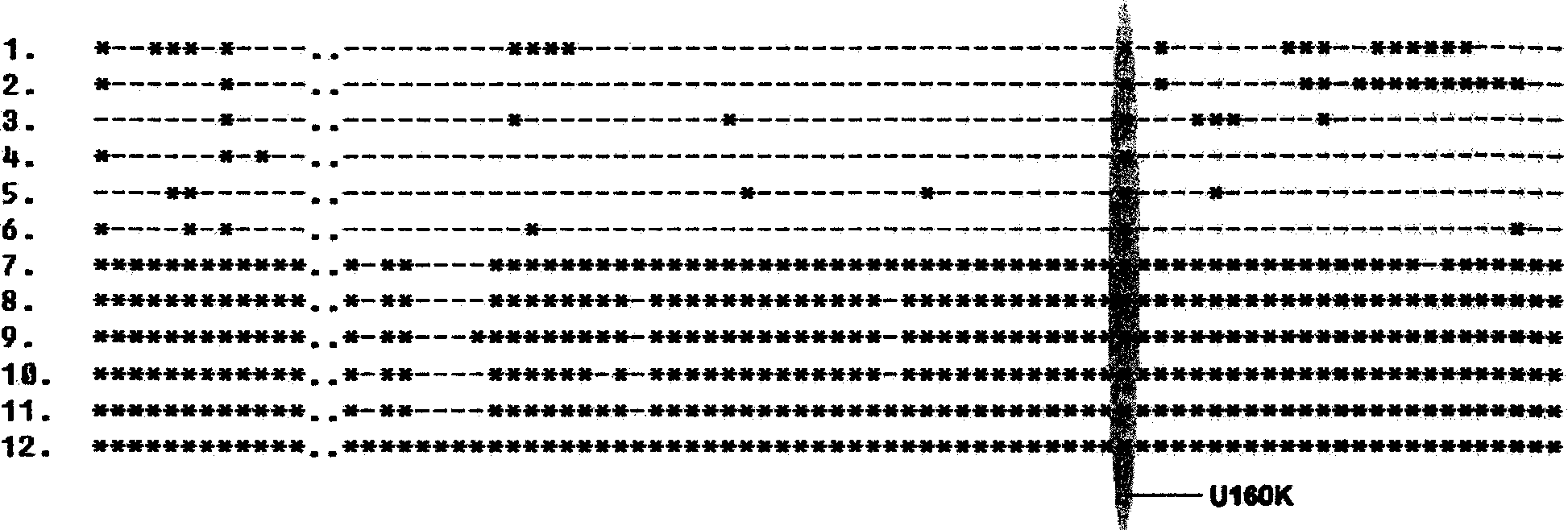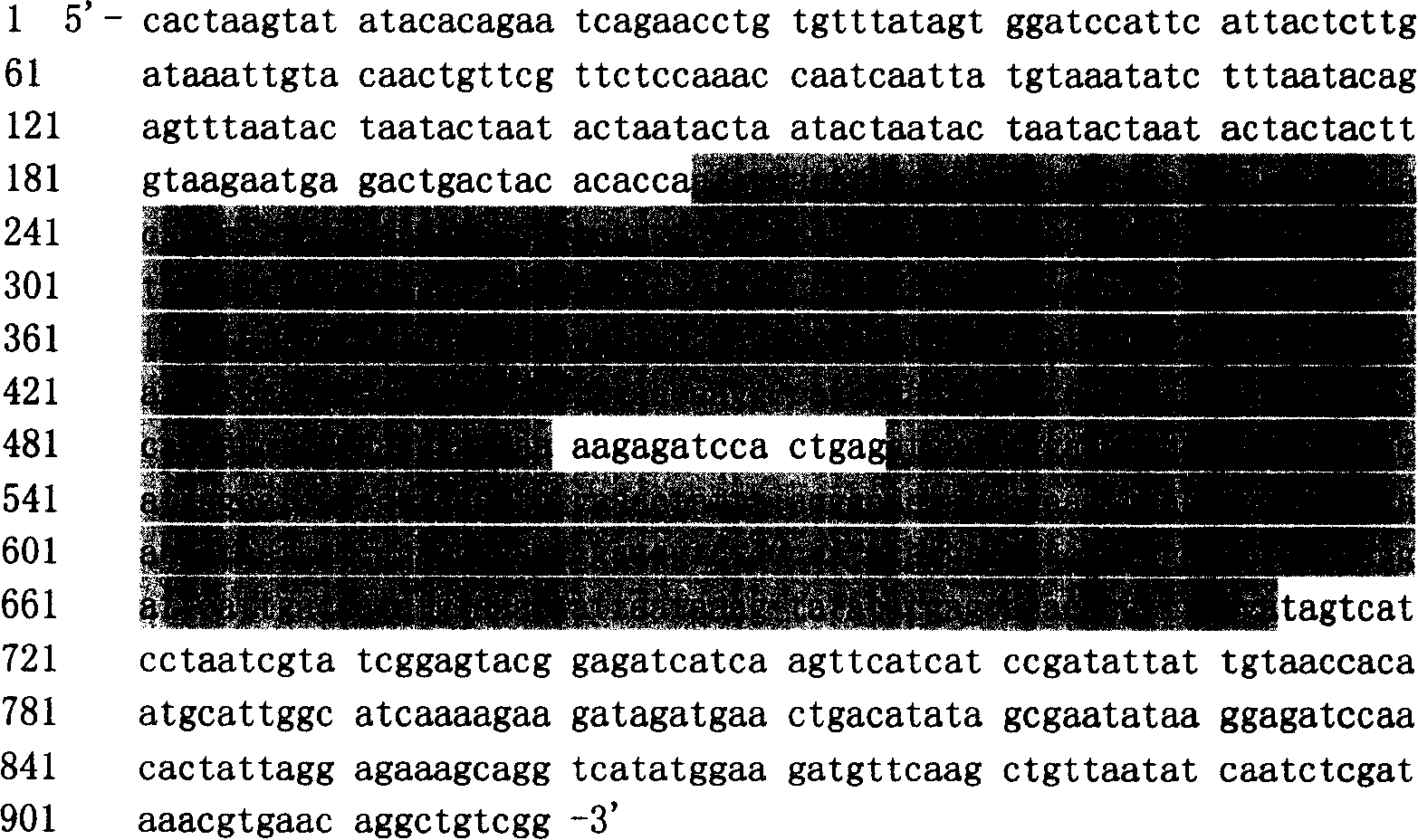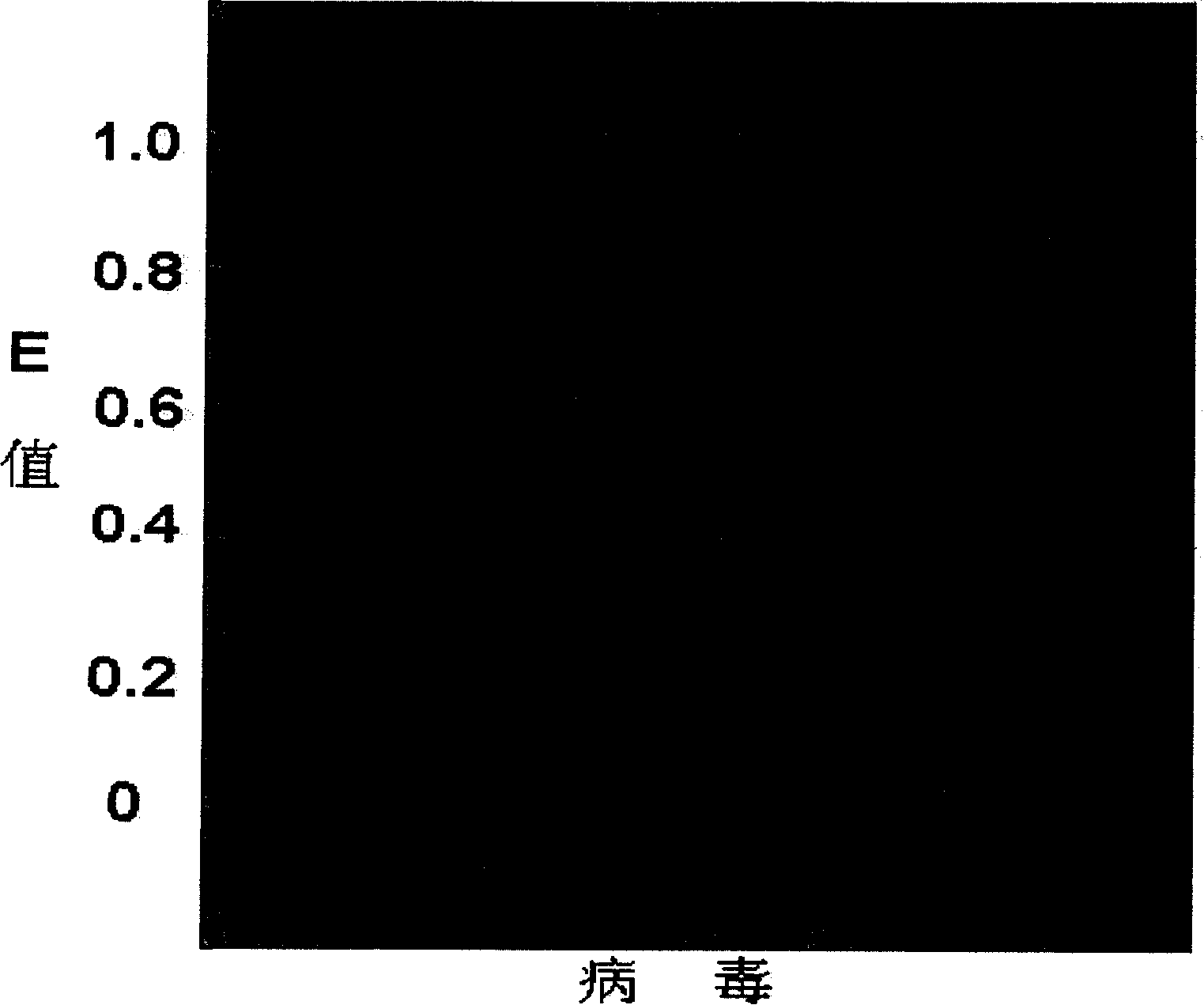A segment differential nucleotide sequence of smallpox virus genom
A nucleotide sequence, smallpox virus technology, applied in antiviral agents, recombinant DNA technology, microbe measurement/testing, etc., can solve the problems of the latter without substantial progress, unable to distinguish smallpox virus from other poxviruses, etc.
- Summary
- Abstract
- Description
- Claims
- Application Information
AI Technical Summary
Problems solved by technology
Method used
Image
Examples
example 1
[0017] Example 1. Searching for the specific sequence of the variola virus genome by comparing the variola virus genome with other virus genomes
[0018] Use Pairwise BLAST software to compare the homology of the variola virus genome sequence and other viruses (see attached table 1 for details) one by one. The results showed that there was only one region in the variola virus genome that was specific to all other virus genomes that participated in the comparison, and it was named the variola virus specific sequence U160K (results are shown in Figure 1). The sequence is 920 nucleotides long and contains two protein coding frames, located at the 5'-end of the sequence from the 207th nucleotide to the 500th nucleotide and from the 516th nucleotide to the 713rd core Nucleic acid (see accompanying drawing 2).
example 2
[0019] Example 2. Using FASTA software to further confirm the specificity of the variola virus genome-specific sequence U160K
[0020] Using FASTA software, the variola virus specific sequence U160K was compared with all published viral nucleotide sequences (a total of 154,696) recorded in the EMBL database (up to October 2002). The results showed that, except for the nucleotide sequence of variola virus, no virus was significantly homologous to the U160K sequence (results are shown in Figure 3), thereby confirming the specificity of the sequence.
example 3
[0021] Example 3. The sequence U160K exists and is conserved in smallpox virus
[0022] The sequence U160K was compared with the genomes of three variola virus genomes, namely, the common variola virus Indian strain and the Bengal strain, and the light variola virus Garcia strain. The results show (see Fig. 4 for details): the sequence is homologous to the 160681st nucleotide to the 161600th nucleotide region of the 5'-end of the Indian strain genome record strand and is arranged continuously, and the homology ratio is 100%; The region from the 160713th nucleotide to the 161680th nucleotide of the 5'-end of the genome record chain of the strain is homologous and continuously arranged, with a homology ratio of 94.0%; The nucleotides to the 163261st nucleotide region are homologous but arranged intermittently, with a homology ratio of 94.7%.
PUM
 Login to View More
Login to View More Abstract
Description
Claims
Application Information
 Login to View More
Login to View More - R&D
- Intellectual Property
- Life Sciences
- Materials
- Tech Scout
- Unparalleled Data Quality
- Higher Quality Content
- 60% Fewer Hallucinations
Browse by: Latest US Patents, China's latest patents, Technical Efficacy Thesaurus, Application Domain, Technology Topic, Popular Technical Reports.
© 2025 PatSnap. All rights reserved.Legal|Privacy policy|Modern Slavery Act Transparency Statement|Sitemap|About US| Contact US: help@patsnap.com



